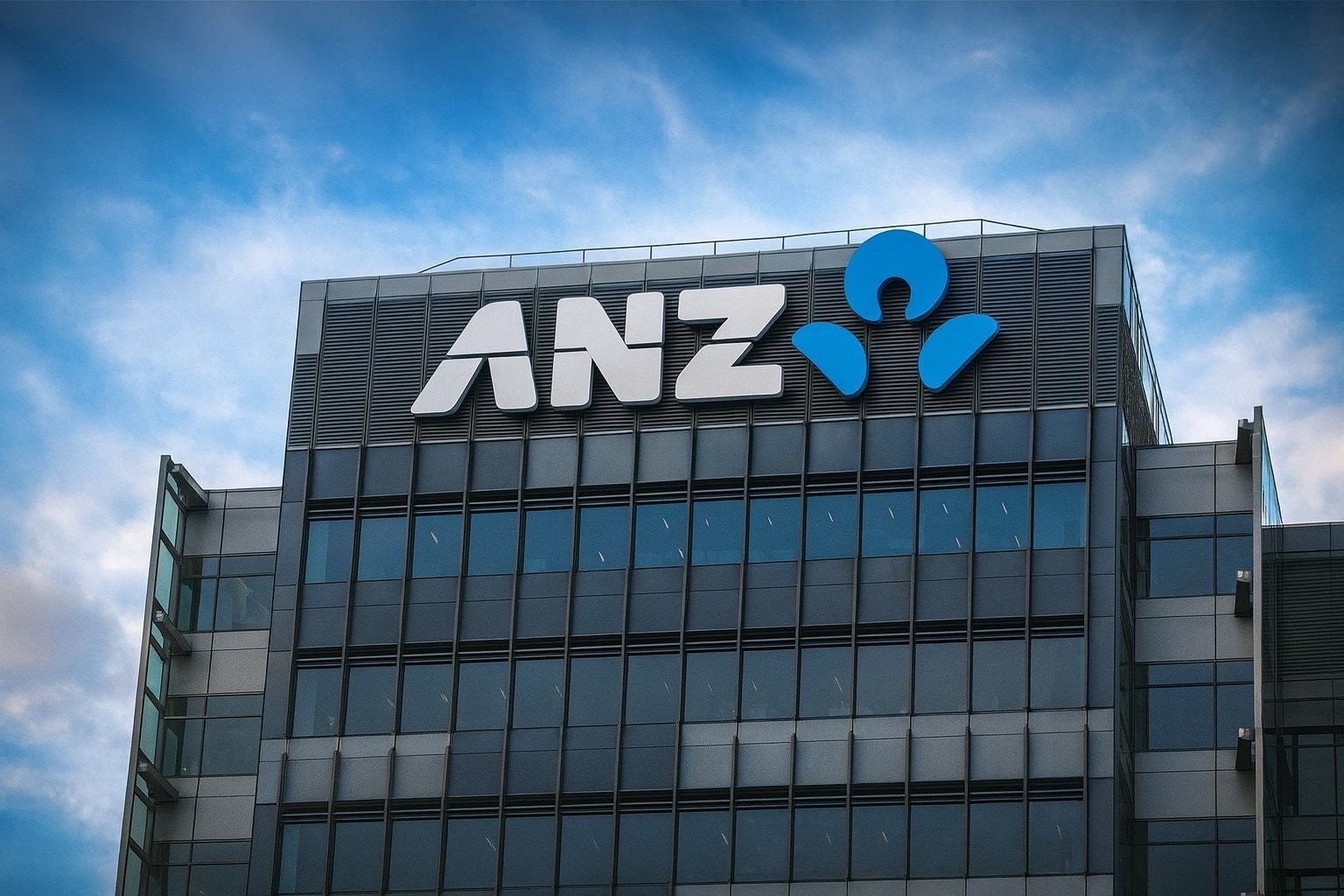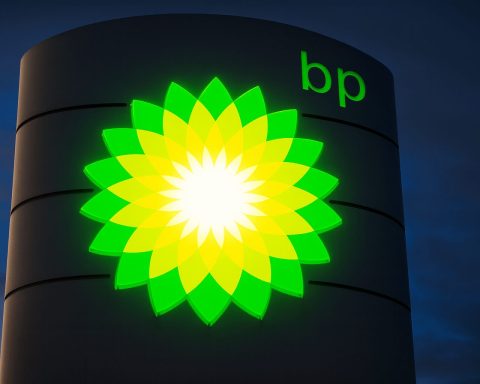As trading resumes on the ASX on Monday, 24 November 2025, ANZ Group Holdings Limited (ASX: ANZ) is stepping into a new week with a mix of solid capital metrics, heavy restructuring costs, and intense regulatory and cultural scrutiny.
The stock last closed at A$34.90 on Friday, 21 November, around 10% below its 52‑week high of A$38.93, giving the bank a market capitalisation of roughly A$104 billion and a one‑year share price gain of about 8–9%. [1]
Here’s what traders and longer‑term investors should have on their radar before the market opens on 24 November 2025.
1. ANZ share price snapshot heading into 24 November 2025
- Last close: A$34.90 (Friday, 21 November 2025) [2]
- Move on the day: Down 1.52% from A$35.44, with an intraday range of A$34.67–35.21. [3]
- 52‑week range: A$26.22–38.93; current price is ~10.35% below the 52‑week high set on 12 November. [4]
- Market cap: Around A$104 billion. [5]
Valuation metrics look mid‑range for a major bank:
- Trailing P/E: ~17.8
- Forward P/E: ~13.7
- Price‑to‑book: ~1.46
- Price‑to‑sales: just under 5x. [6]
With a total FY25 dividend of A$1.66 per share and the current price around A$34.90, ANZ is yielding just under 5% on a trailing basis, before any franking benefits. [7]
In the broader market, the big four Australian banks have been volatile. A sharp market sell‑off in mid‑November hit the sector hard, with ANZ down about 2% on 19 November as financials led the declines, before the ASX 200 enjoyed its strongest day in months on 20 November and the banks bounced back. [8]
2. FY25 results: lower reported profit, but underlying earnings flat
ANZ’s full‑year 2025 result (year ended 30 September 2025) is still the key fundamental reference point for today’s trade.
Headline numbers
ANZ reported: [9]
- Statutory profit: A$5,891 million (down 10% year‑on‑year).
- Cash profit: A$5,787 million (down 14%).
- Common Equity Tier 1 (CET1) capital ratio: about 12.0%, with management indicating a pro‑forma CET1 of ~12.26% once capital actions are taken into account. [10]
- Cash return on equity: 8.1%.
The investor discussion pack breaks out the underlying trends: [11]
- Cash profit excluding significant items: A$6,896 million – essentially flat versus A$6,921 million in FY24.
- Revenue: Up 7% to A$22,184 million.
- Expenses: Up 11% to A$11,849 million, driven largely by restructuring and remediation.
- Profit before provisions: Up 2% to A$10,335 million.
- Cost‑to‑income ratio: Worsened from 51.4% to 53.4%.
One‑off charges weighing on earnings
The ugly part of the result is the A$1.11 billion after‑tax profit hit from “significant items”, which include: [12]
- Around A$414 million in redundancy costs as ANZ cuts 3,500 roles.
- Roughly A$264 million to settle a major regulatory lawsuit with ASIC.
- Charges tied to winding down the Cashrewards business.
- A reassessment of ANZ’s investment in PT Bank Pan Indonesia and costs related to the Suncorp Bankintegration.
This explains why the reported cash profit fell sharply even though underlying cash earnings barely moved.
3. Dividend: attractive yield, but stock now trading ex‑dividend
For income‑focused investors, ANZ’s dividend remains central.
- Final FY25 dividend: 83 cents per share, 70% franked.
- Full‑year FY25 dividend: 166 cents per share, unchanged on FY24 according to both ANZ and independent coverage. [13]
Dividend timetable for the second‑half FY25 payout: [14]
- Ex‑dividend date: 13 November 2025
- Record date: 14 November 2025
- Payment date: 19 December 2025
That means anyone buying ANZ on or after 13 November is not entitled to this final dividend. Traders heading into the 24 November session are therefore dealing with a stock that is firmly ex‑dividend, with the usual post‑dividend price adjustment largely behind it.
ANZ has also flagged a 1.5% discount on the next two Dividend Reinvestment Plans (DRPs) and indicated it does not expect to neutralise those DRPs, effectively using them to bolster capital. [15]
4. ANZ 2030: strategy reset, halted buyback, and big cost cuts
The other major theme driving ANZ’s narrative is CEO Nuno Matos’ “ANZ 2030” strategy, unveiled in October and reinforced alongside the FY25 results.
Four strategic pillars and five near‑term priorities
Under ANZ 2030, the bank is focusing on four strategic pillars: Customer First, Simplicity, Resilience, and Delivering Value. [16]
To make that real, management has identified five immediate priorities:
- Embedding a new leadership team.
- Accelerating the integration of Suncorp Bank.
- Rolling out the ANZ Plus digital front‑end across all retail and SME customers.
- Reducing duplication and simplifying the organisation (including the 3,500 role reductions and exit of 1,000 managed‑services consultants). [17]
- Strengthening non‑financial risk management under an APRA‑approved remediation plan. [18]
Matos has told investors that ANZ aims to improve productivity, cut costs and then accelerate growth in a second phase beyond FY27. [19]
Halting the buyback and redeploying capital
To fund this reset, ANZ:
- Cancelled the remaining ~A$800 million of a A$2 billion share buyback, after completing about A$1.2 billion. [20]
- Plans around A$800 million of pre‑tax cost savings in this financial year alone, coming from job cuts, restructurings and exiting non‑core businesses such as Cashrewards. [21]
- Has doubled its expected annual synergies from the Suncorp Bank acquisition to A$500 million per year. [22]
Matos is targeting a 12% return on tangible equity by 2028 and 13% by 2030, up from around 10.3% previously. [23]
Importantly for sentiment, ANZ managed to do all this without cutting the dividend, which was one reason the shares rose on the day of the strategy announcement despite the buyback pause. [24]
5. Regulatory pressure and risk culture: the overhang you can’t ignore
If you own or trade ANZ, you are also buying into a bank that is under intense regulatory and cultural scrutiny.
‘Good news’ culture and a court‑enforceable undertaking
A McKinsey review, published in November as part of a court‑enforceable undertaking, found that ANZ has a “good news culture” that discourages staff from speaking up about potential problems, and highlighted diffuse accountability and bureaucratic decision‑making. [25]
ANZ has:
- Entered into a court‑enforceable undertaking with APRA to fix non‑financial risk management failures. [26]
- Accepted a A$240 million penalty from ASIC linked to a government bond deal and other misconduct, contributing to total penalties of more than A$310 million across 11 civil penalty proceedings since 2016. [27]
Matos has emphasized that risk and culture remediation is a multi‑year process and confirmed that APRA has now approved ANZ’s Root Cause Remediation Plan, which management expects to take around three years to fully implement. [28]
System‑wide stress tests and mortgage standards
On the system level, APRA’s first system‑wide stress test concluded that Australian banks and super funds could withstand a year‑long financial market shock, but warned that high household debt is a key vulnerability and explicitly cautioned banks against lowering lending standards to chase mortgage market share. [29]
Given ANZ’s large mortgage book and strategic pivot toward proprietary lending channels, these warnings matter for its growth ambitions and margin strategy.
6. Mortgage market dynamics: margin squeeze vs growth opportunity
ANZ’s earnings story is deeply tied to Australia’s A$1.6 trillion home‑loan market.
Net interest margin under pressure
For FY25, ANZ’s net interest margin (NIM) slipped to 1.55%, as cheaper mortgages and lower rates squeezed profitability despite growth in lending and deposits. [30]
Across the big four banks, full‑year cash earnings fell about 4.5% in 2025, with sector‑wide NIM at just 1.8%. [31]
Big four pushing away from brokers
A recent Reuters piece highlighted a key industry pivot: [32]
- Mortgage brokers now account for almost 80% of new home loans in Australia.
- ANZ, NAB and Westpac all plan to hire more front‑line bankers and grow proprietary (in‑house) lending, which can be 20–30% more profitable than broker‑originated loans.
- ANZ specifically wants to boost its mortgage and business banker workforce by up to 50% over five years, while reducing its reliance on brokers.
This aligns with ANZ 2030’s focus on Customer First and Simplicity—but it also means higher near‑term costs as staff numbers are ramped up in key distribution channels even while other parts of the bank are being cut back. [33]
7. Strategy execution: Suncorp, digital, and the ANZ franchise
ANZ is trying to convince the market that, under Matos, it can turn flat underlying earnings into outperformance by executing on a few big levers.
Key operational points:
- Suncorp Bank integration: ANZ plans a “safe and secure migration” of Suncorp Bank customers onto its own platforms by June 2027, aiming to simplify systems and unlock scale benefits. [34]
- Digital front‑end (ANZ Plus): The bank wants to roll out a unified ANZ Plus front‑end to all 8 million retail and SME customers by September 2027, tying in the Suncorp franchise. [35]
- Franchise strengths: ANZ still has leading positions in Institutional banking in Australia, New Zealand and Asia, and a dominant share in New Zealand retail and business banking. [36]
Matos has framed FY26–FY27 as a period of “get the basics right”—cost reduction, culture reset, risk remediation and platform build—before accelerating growth later in the decade. [37]
8. ESG and the upcoming 2025 AGM: deforestation and governance in focus
ANZ’s 2025 Annual General Meeting will be held on Thursday, 18 December 2025, at the International Convention Centre in Sydney, with full hybrid participation options for shareholders. [38]
Ahead of that meeting, the bank has received several shareholder‑proposed resolutions, including: [39]
- An amendment to ANZ’s constitution to formalise the ability of shareholders to express opinions and requests about directors’ powers.
- Resolutions calling for disclosure of ANZ’s exposure to deforestation through its agricultural financing and a strategy to eliminate financed deforestation.
Environmental groups such as Market Forces and BankTrack are actively campaigning around the AGM, branding ANZ a “climate laggard” and pushing for stronger fossil fuel and deforestation policies. [40]
While these resolutions are unlikely to pass outright, high support levels could influence ANZ’s future lending policiesand represent a reputational risk that investors should factor in.
9. Valuation check: what the market is pricing in
Putting it together, ANZ currently trades at: [41]
- ~17.8x trailing earnings and ~13.7x forward earnings,
- ~1.46x book value,
- With a trailing dividend yield just under 5% at the current share price, before franking.
Given that:
- Underlying FY25 cash profit is flat, not growing. [42]
- The bank is embarking on a high‑execution‑risk turnaround (culture, risk, digital, Suncorp integration, cost cutting). [43]
- Regulatory pressure is real and sustained, especially around risk culture and mortgage standards. [44]
…the current valuation implies the market is giving ANZ some benefit of the doubt that Matos will deliver on cost reductions and revenue growth without further major missteps or fines.
10. What to watch at the open on 24 November 2025
Going into today’s session, here are the practical watch‑points for traders and investors:
- Sector and macro tone
- Bank stocks have traded in a tight band but with sharp swings around macro headlines and US tech moves. The mid‑November sell‑off and subsequent relief rally show how quickly sentiment can flip. [45]
- Keep an eye on overnight moves in global yields and risk assets, which often set the tone for ASX financials.
- Follow‑through from FY25 results and strategy reset
- The FY25 numbers and ANZ 2030 strategy are now fully in the public domain; the question is how broker models and institutional investors digest them over the coming weeks. Any new analyst downgrades or upgrades, particularly on margins and cost‑out assumptions, could shift the share price.
- Margin commentary and mortgage competition
- With NIM at 1.55% and APRA explicitly warning banks not to loosen lending standards to win market share, investors will be sensitive to any news or commentary about pricing in the home‑loan book. [46]
- Regulatory headlines and risk‑culture updates
- Additional APRA or ASIC communications, or commentary around the court‑enforceable undertaking, could move sentiment quickly. The publication of the McKinsey review and subsequent parliamentary testimony from Matos show regulators are keeping ANZ under close watch. [47]
- AGM and ESG campaign build‑up
- As the 18 December AGM approaches, expect increasing media coverage of climate, deforestation and governance resolutions. Strong shareholder support for activist resolutions may not change FY26 numbers immediately, but it could shape ANZ’s medium‑term lending strategy and reputation. [48]
- Positioning after the ex‑dividend date
- With the stock trading ex‑dividend and income‑oriented buying pressure reduced in the short term, short‑term flows are likely to be more driven by macro and news than by dividend capture strategies. [49]
Bottom line
Before the bell on 24 November 2025, ANZ looks like a high‑quality but challenged franchise:
- Strong capital and dominant institutional and New Zealand businesses,
- A clear strategy with ambitious cost‑cutting and growth targets,
- A fully maintained dividend and respectable yield,
…but also:
- Flat underlying earnings,
- Margin pressure in a fiercely competitive mortgage market,
- Heavy reliance on successful execution of a complex cultural, risk and technology transformation under the eye of tough regulators.
For traders, that combination means ANZ can be headline‑sensitive and volatile. For long‑term investors, it’s a question of whether the ANZ 2030 plan and cost‑out program will ultimately justify today’s valuation.
This article is general information only and does not constitute financial advice. Consider your own objectives and seek professional guidance before making any investment decisions.
References
1. stockanalysis.com, 2. www.intelligentinvestor.com.au, 3. www.intelligentinvestor.com.au, 4. markets.ft.com, 5. stockanalysis.com, 6. finance.yahoo.com, 7. www.anz.com.au, 8. www.news.com.au, 9. www.anz.com.au, 10. www.anz.com.au, 11. www.anz.com, 12. www.reuters.com, 13. www.anz.com.au, 14. www.anz.com, 15. www.anz.com.au, 16. www.anz.com.au, 17. www.anz.com.au, 18. www.anz.com.au, 19. www.anz.com.au, 20. www.reuters.com, 21. www.reuters.com, 22. www.reuters.com, 23. www.reuters.com, 24. www.reuters.com, 25. www.reuters.com, 26. www.reuters.com, 27. www.reuters.com, 28. www.anz.com.au, 29. www.reuters.com, 30. www.reuters.com, 31. www.reuters.com, 32. www.reuters.com, 33. www.anz.com.au, 34. www.anz.com, 35. www.anz.com.au, 36. www.anz.com.au, 37. www.anz.com.au, 38. www.anz.com, 39. data-api.marketindex.com.au, 40. www.banktrack.org, 41. finance.yahoo.com, 42. www.anz.com, 43. www.anz.com.au, 44. www.reuters.com, 45. www.news.com.au, 46. www.reuters.com, 47. www.reuters.com, 48. data-api.marketindex.com.au, 49. www.anz.com









